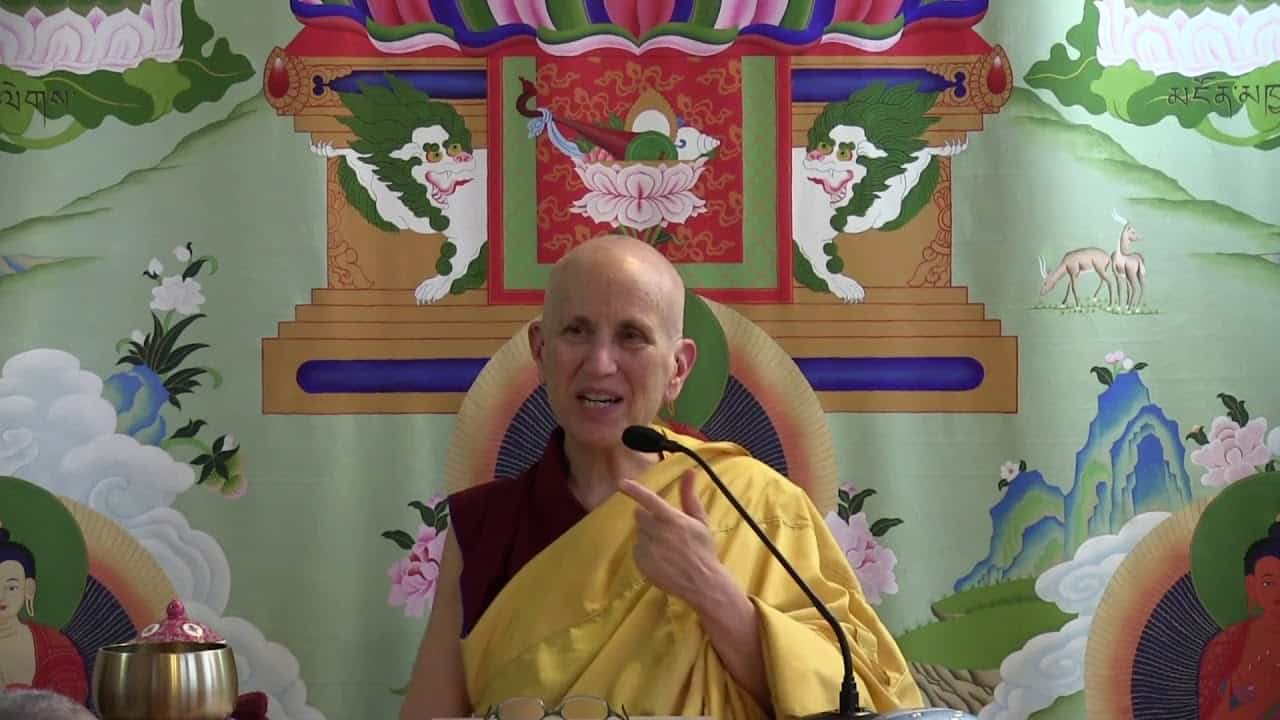Mind training
Part of an ongoing series of teachings based on Approaching the Buddhist Path, the first book in “The Library of Wisdom and Compassion” series by His Holiness the Dalai Lama and Venerable Thubten Chodron.
- Two factors required to develop compassion
- Three levels of dukkha and examples from real life
- Samsara and nirvana are states of the fundamental mind of clear light
- The importance of cherishing all sentient beings as a way to create merit
- Ways of transforming adverse situations into the path to awakening
40 Approaching the Buddhist Path: Mind Training (download)
Contemplation points
- Identify the dukkha of change in your own experience. Bring up one or two examples.
- Ven. Chodron said: “Wisdom realizing emptiness can bring liberation, but not buddhahood. Buddhahood is attained only through great compassion and bodhichitta.” On what do the fruits of our spiritual practice rely and why?
- What are some of the mind trainings that can counter emotional responses in difficult situations (i.e. what mind training techniques can you use to counter fear, anger or self-pity)? Take a couple of examples that you could imagine practicing or already practice.
Venerable Thubten Chodron
Venerable Chodron emphasizes the practical application of Buddha’s teachings in our daily lives and is especially skilled at explaining them in ways easily understood and practiced by Westerners. She is well known for her warm, humorous, and lucid teachings. She was ordained as a Buddhist nun in 1977 by Kyabje Ling Rinpoche in Dharamsala, India, and in 1986 she received bhikshuni (full) ordination in Taiwan. Read her full bio.


